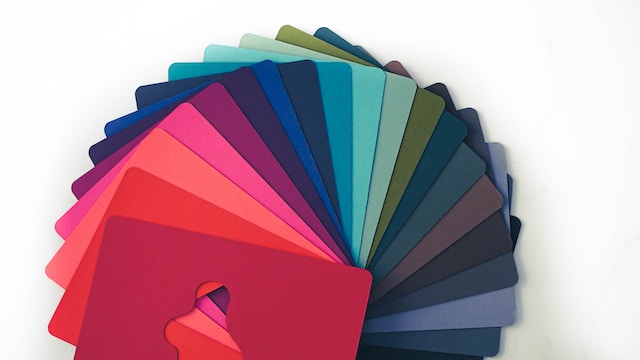Color Psychology in Graphic Design: Making Your Brand’s Palette Work for You

In the world of graphic design, colour isn’t just about aesthetics; it’s a powerful tool that can evoke emotions, convey messages, and shape perceptions. Understanding the psychology behind colour choices is crucial for businesses looking to strengthen their brand identity. In this blog post, we will explore how different colours can evoke specific emotions and how businesses can leverage this knowledge to create a compelling brand image.
The Psychology of Colors
Colours have a profound impact on human psychology and can trigger a wide range of emotions and associations. Here’s a brief overview of some commonly used colours and the emotions they often evoke:
Red: Red is associated with passion, energy, and excitement. It can also signify danger or urgency. Many food and beverage brands use red to stimulate appetite and create a sense of urgency (e.g., fast-food logos).
Blue: Blue is often linked to trust, calmness, and professionalism. It’s a popular choice for tech companies and financial institutions to convey reliability and security.
Yellow: Yellow is bright, cheerful, and associated with happiness and optimism. Brands like McDonald’s use yellow to evoke a sense of joy and friendliness.
Green: Green symbolizes nature, growth, and health. It’s often used by eco-friendly and organic brands to convey sustainability and wellness.

Purple: Purple is associated with luxury, creativity, and sophistication. High-end fashion and beauty brands often use purple to convey a sense of exclusivity.
Orange: Orange is energetic and fun, often associated with enthusiasm and creativity. It’s used by brands looking to stand out and create a playful image.
Black: Black represents elegance, power, and sophistication. Luxury brands frequently use black to convey exclusivity and class.
White: White signifies purity, simplicity, and cleanliness. It’s a popular choice for healthcare and tech brands that want to convey clarity and simplicity.
Leveraging Color Psychology in Branding
Now, let’s explore how businesses can leverage colour psychology to strengthen their brand identity:
Consistency: Choose a colour palette that aligns with your brand’s core values and message. Consistency in colour usage across all brand materials, from logos to websites, helps create a strong, recognizable brand identity.
Target Audience: Consider your target audience’s preferences and emotional responses to different colours. Tailor your colour choices to resonate with your specific customer demographic.
Competitive Analysis: Analyze your competitors’ colour choices. Differentiate your brand by selecting colours that stand out in your industry while still aligning with your brand’s personality.
Cultural Considerations: Be mindful of cultural associations with colours. Colours can have different meanings in various cultures, so ensure your colour choices are culturally sensitive if you have a global audience.
Testing and Feedback: Conduct surveys and gather feedback from your audience to evaluate how your chosen colours make them feel and perceive your brand. Adjust your palette based on this feedback.
Emotionally Aligned Messaging: Align your brand’s messaging with the emotions associated with your chosen colours. For example, if your brand uses blue to convey trust, make sure your messaging emphasizes reliability and security.
Adaptability: Consider how your chosen colours will appear across different media and backgrounds. Ensure your palette remains effective in various contexts, both online and offline.
Conclusion
Colour psychology is a valuable tool in graphic design and branding. By understanding the emotional responses and associations tied to different colours, businesses can make strategic choices to strengthen their brand identity and connect with their target audience on a deeper level. The careful selection and consistent application of colours can be a key elements in building a memorable and compelling brand that resonates with customers.

